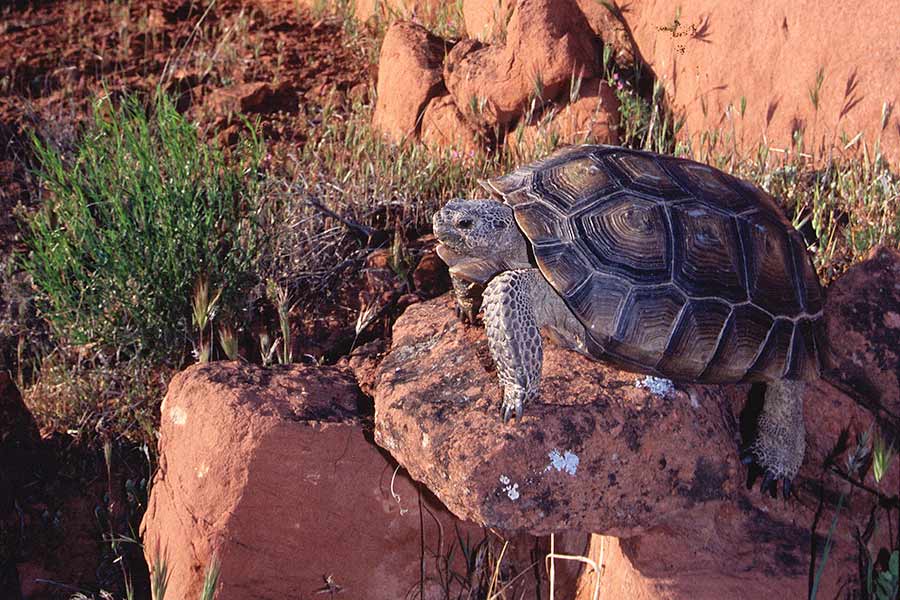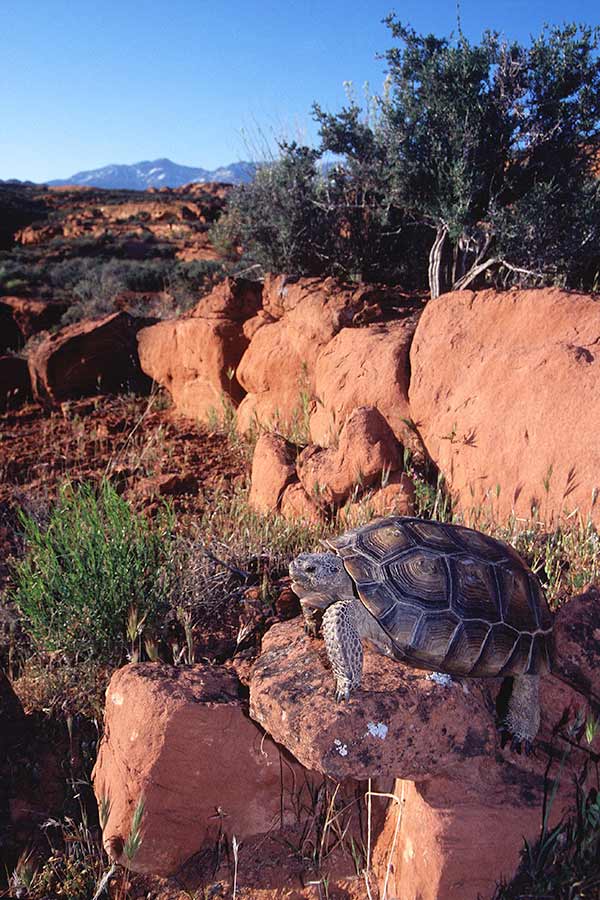DWR seeking Utahns to adopt desert tortoises illegally removed from the wild
Salt Lake City — The Utah Division of Wildlife Resources currently has several desert tortoises available for adoption and is accepting applications.
Mojave desert tortoises, native to areas north and west of the Colorado River in Arizona, Utah, Nevada and California, were listed as threatened under the Endangered Species Act in 1990. As such, desert tortoises are protected under federal and state laws. In Utah, it is illegal to collect or remove desert tortoises from the wild. It is also illegal to release captive tortoises back into the wild or to transport them into Utah without the proper certifications.
Washington County is the native range of the Mojave desert tortoise in Utah. It's also an area with a lot of growth and recreation, which leads to more human-tortoise encounters. The DWR occasionally comes into possession of desert tortoises for a variety of reasons:
- Someone illegally removed a desert tortoise from the wild.
- A wild tortoise wandered into an urban area or was found outside its native range where it would not survive.
- Someone was illegally housing a desert tortoise. If a desert tortoise owner moves from another state into Utah, they must apply for the proper certifications in order to bring their tortoise with them; otherwise, they must return the tortoise to an approved adoption facility within their previous state.
- A wild tortoise that was adopted is being surrendered due to the family relocating.
"Removing tortoises from the wild can harm wild populations by reducing their ability to reproduce and sustain themselves on the landscape," DWR Wildlife Biologist Ann McLuckie said. "Tortoises that are removed from the wild cannot be released back into the wild, due to a risk of introducing diseases, especially if they've been kept in a home with other animals. They are susceptible to a density-dependent disease called upper respiratory tract disease, which presents like pneumonia."
The Utah Desert Tortoise Adoption Program began in the 1990s, after tortoises were placed on the Endangered Species list. This year, the DWR has received roughly 20 desert tortoises that are now available for adoption. If you are interested in adopting a tortoise, you should do the following:
- Submit an application to This email address is being protected from spambots. You need JavaScript enabled to view it. and pay the $10 handling fee.
- Design a safe outdoor and indoor environment for a tortoise, following the DWR guidelines.
- Once you are approved for an adoption, you will pay the $75 Certificate of Registration fee.
- Be aware that tortoises can live 60–70 years, and note that you are responsible for all veterinarian costs.
- Note that you must live in Utah to adopt a desert tortoise from the DWR, and you can't live in Washington, Kane or Iron counties.
"Captive tortoises make great pets," McLuckie said. "They have their own unique personality, they will gladly eat the weeds in your backyard and they are fairly independent as long as they have shade and food. They also hibernate for roughly five months out of the year, making them a fairly low-maintenance pet."
In Utah, the majority of desert tortoises reside in the Red Cliffs Desert Reserve, where there are roughly 2,000 adult tortoises. The population has not yet recovered to the numbers it had before wildfires scorched the area in 2005. However, during the last few years, the population has remained relatively stable.
"Future challenges that threaten tortoise populations include disease from introductions of exotic pets, wildfires — primarily due to the invasion of exotic grasses — and habitat loss from continued development," McLuckie said. "In partnership with federal, state and local agencies, our focus includes restoring habitat that has been impacted by wildfires, protecting habitat from degradation and translocating tortoises from developed areas into designated sites within the Red Cliffs Desert Reserve."


















